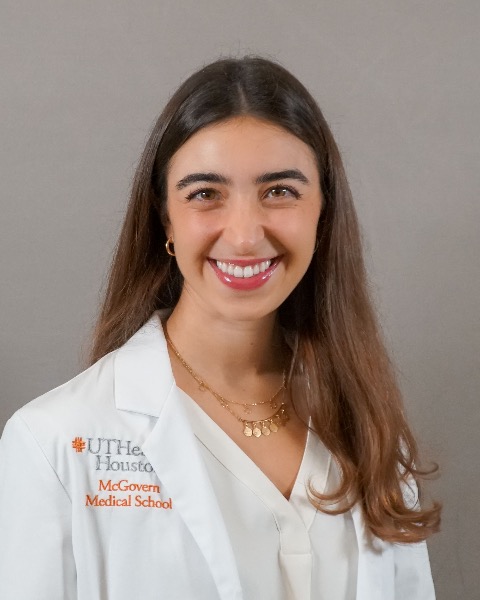Poster Session 1
(248) Single-nucleus transcriptomic analysis of placental membranes reveals metabolic dysregulation and increased trophoblast proliferation in COVID-19

Katherine B. Le, BS
2nd Year Medical Student
McGovern Medical School at UTHealth Houston
Houston, Texas, United States
Natalie N. Lanners, BA, BS (she/her/hers)
2nd Year Medical Student
McGovern Medical School at UTHealth Houston
Houston, TX, United States- RK
Rachel Keuls
PhD Student
Baylor College of Medicine
Houston, Texas, United States - TF
Tina Findley, MD
Associate Professor
McGovern Medical School at UTHealth Houston
Houston, Texas, United States - RP
Ron Parchem, PhD
Associate Professor
Baylor College of Medicine
Houston, Texas, United States 
Jacqueline G. Parchem, MD (she/her/hers)
Assistant Professor
McGovern Medical School at UTHealth Houston
Houston, Texas, United States
Submitting Author and Presenting Author(s)
Coauthor(s)
Recent work showing that placental membrane trophoblasts expand in the context of severe preeclampsia suggests a role for membrane trophoblasts in placental disease. Yet, the biology and function of membrane trophoblasts are poorly understood. We sought to determine the effects of inflammatory stress from maternal COVID-19 on membrane cytotrophoblast (CTB) and extravillous trophoblast (EVT) gene function.
Study Design:
We analyzed placenta single-nucleus RNA sequencing data from patients with symptomatic COVID-19 at birth (n=4) and healthy gestational age-matched controls (n=4). To evaluate the effects of COVID-19 on membrane CTBs and EVTs, we identified differentially expressed genes (DEGs) in COVID-19 vs. control samples for each cell population using Seurat in R. GO Biological Process gene set enrichment analysis (GSEA) was conducted using the Fgsea R package (q-value threshold < 0.1).
Results:
EVTs showed downregulation of mitochondrial genes (MT-ND4, MT-ND5) and matrix metalloproteinase inhibitors (TIMP2, TIMP3), which regulate tissue remodeling and apoptosis. EVTs also exhibited upregulated PAPPA2, a growth factor regulator, and EGLN3, a hypoxia inducible factor. CTBs showed similar downregulation of mitochondrial genes and upregulation of EGLN3, in addition to PPARG, whose increased expression has been linked to ameliorating placental dysfunction. GSEA of EVT DEGs revealed the upregulation of pathways involved in signal transduction and cell proliferation, including MAPK cascade. Oxidative phosphorylation and cellular respiration were downregulated (Fig 1). GSEA results for CTBs showed pathways involved in carbohydrate metabolism and cell proliferation, although these were not significant.
Conclusion:
In the setting of placental stress due to COVID-19, membrane EVTs and CTBs demonstrate mitochondrial dysfunction, response to hypoxia, downregulation of aerobic respiration pathways, and upregulation of cell proliferation pathways, primarily observed in EVTs. This study uncovers adaptations of understudied membrane trophoblasts in the context of COVID-19.

